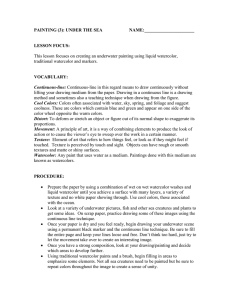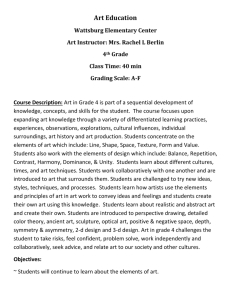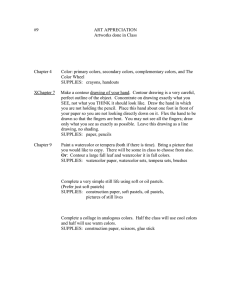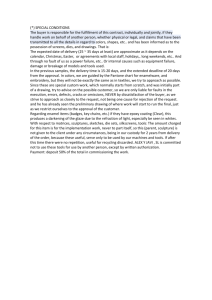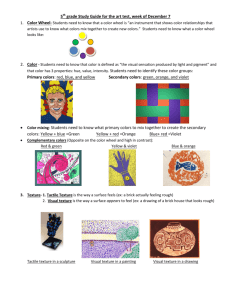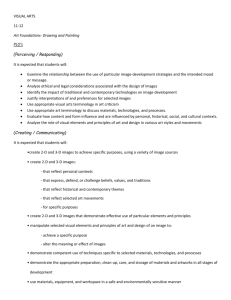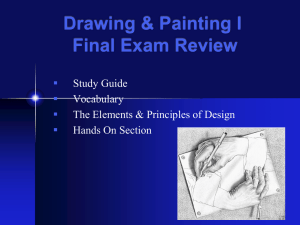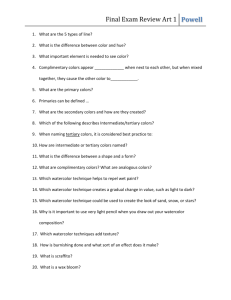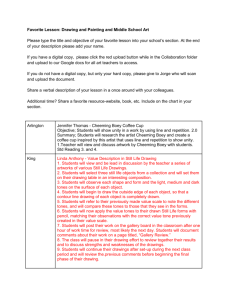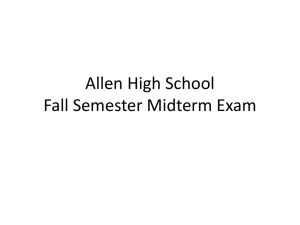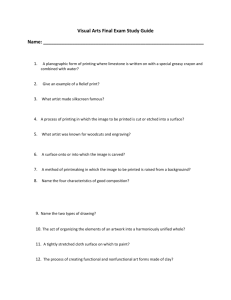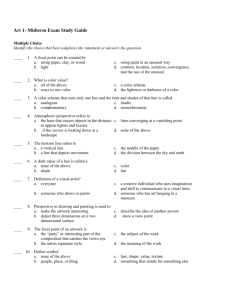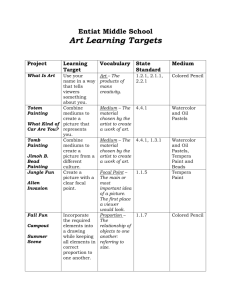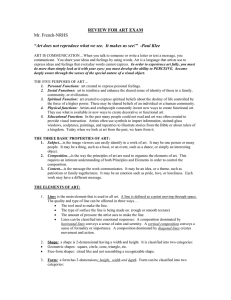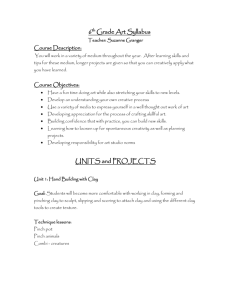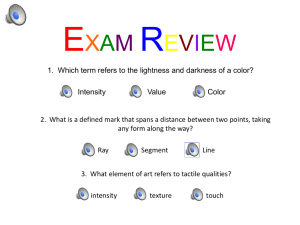Kindergarten Art Syllabus
advertisement
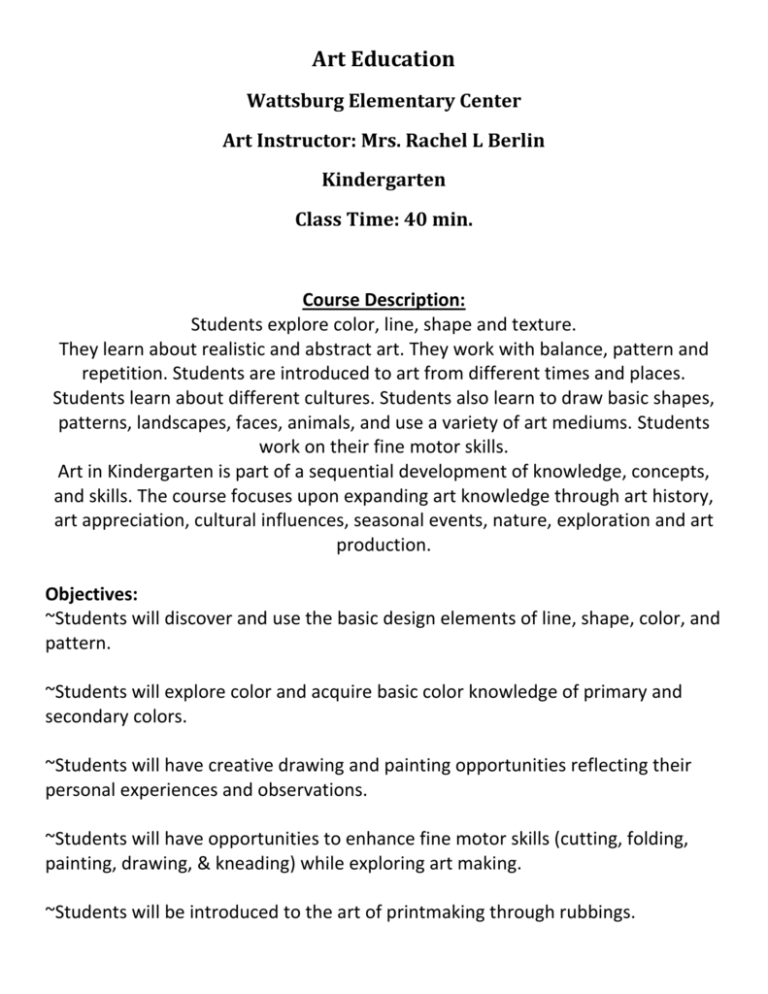
Art Education Wattsburg Elementary Center Art Instructor: Mrs. Rachel L Berlin Kindergarten Class Time: 40 min. Course Description: Students explore color, line, shape and texture. They learn about realistic and abstract art. They work with balance, pattern and repetition. Students are introduced to art from different times and places. Students learn about different cultures. Students also learn to draw basic shapes, patterns, landscapes, faces, animals, and use a variety of art mediums. Students work on their fine motor skills. Art in Kindergarten is part of a sequential development of knowledge, concepts, and skills. The course focuses upon expanding art knowledge through art history, art appreciation, cultural influences, seasonal events, nature, exploration and art production. Objectives: ~Students will discover and use the basic design elements of line, shape, color, and pattern. ~Students will explore color and acquire basic color knowledge of primary and secondary colors. ~Students will have creative drawing and painting opportunities reflecting their personal experiences and observations. ~Students will have opportunities to enhance fine motor skills (cutting, folding, painting, drawing, & kneading) while exploring art making. ~Students will be introduced to the art of printmaking through rubbings. ~Students will be introduced to sculpture through the use of paper, clay and other art materials. ~Students will learn about art from different cultures and events that happen around the world: Chinese New Year, Japanese Art, Aboriginal Paintings, Art from Africa & Native American Art. Course Outline A. Line, Shape & Pattern 1. Lines with Emotions=How different lines make us feel different ways. 2. Recognizing lines that surround us=Natural & Commercial 3. Naming shapes and where we see them=Shapes All Around Us 4. What is a pattern-How is it used? Why is it used? B. Texture 1. What is texture? Where can we find it? How can we make it? 2. Texture Rubbings C. Color (Primary & Secondary) 1. Identifying the primary colors 2. Identifying the secondary colors 3. Mixing paint colors 4. Art Appreciation-looking at artists who used primary or secondary colors. D. Drawing & Painting 1. Figure, Object & Animal Drawings/Paintings 2. Watercolor Experience 3. Tempera Paint Experience E. Art From Different Cultures 1. Chinese New Year 2. Asian Art 3. Navajo Indians 4. Aborigines 5. Art from Africa F. Seasonal & Holiday Art 1. Fall, Winter, Spring, & Summer G. Collage 1. Cutting paper 2. Folding paper 3. Multi-Media 4. Decoupage 5. Crayon resist H. Sculpture (Realistic & Abstract) 1. Clay 2. Craft Materials (Multi-Media) 3. Paper Evaluations Daily Class Participation & Behavior Marks (3, 2, 1) Teacher Observations Instructional Supplies Construction Paper (Variety of Colors & White) Oak Tag Drawing Paper Tissue Paper Newsprint Cardboard Watercolor Paints Tempera Paints Acrylic Paints Paint Brushes Sponges (cut into squares) Yarn Paper Plates Lick n Stick Gummed Paper Beads Feathers Buttons Watercolor Markers Crayola Markers Colored Pencils Crayons Chalk/Pastels Rubbing Plates Clay & Glazes Newspaper Small Brown Lunch Bags Pencils Erasers Scissors Elmers Glue Instructional Materials Art Prints/Posters Computer & Television Internet Projector Video Productions Books & Magazines Models & Figurines Cultural Artifacts
